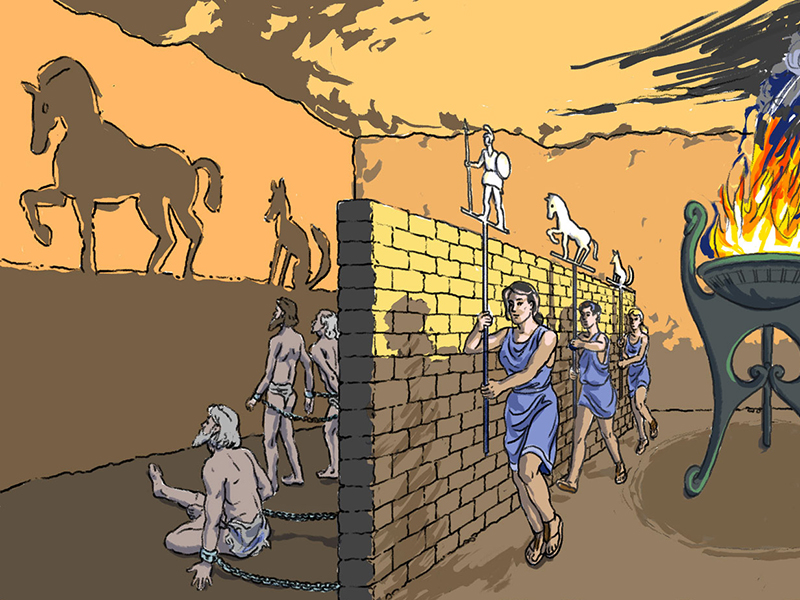

Research into enactive roles to foster argumentative knowledge construction in SL reveals that students who engage in virtual discussions “identify closely with the character they are enacting within the SL virtual environment and are better able to develop multiple perspectives…” 7 To support students through the role-play process, they will be repeatedly prompted to reflect on their experience. Role-play is critical to student success in this application of SL. Knowledge results from the combination of grasping experience and transforming it.” 6 It is our intention that students understand Plato’s allegory as a participant in it while being guided through a process to examine their perspectives on life–and even reshaping them. According to Kolb, “learning is the process whereby knowledge is created through the transformation of experience. This type of guided instruction is not only active 5 but also experiential. From the time students emerge in the cave, they follow a preset instructional sequence and are guided through their experience in and out of the cave. Instructor interaction is critical to the student experience. This application of the Cave allegory therefore enables the instructor to construct a SL environment that is both learner- and knowledge-centered. 4 Our application (known as a sim) of Plato’s allegory requires learners to challenge their existing attitudes and beliefs as they participate, while simultaneously receiving expert guidance and–outside of the cave– having opportunities for formative assessment. 3 From a teaching and learning perspective, SL is also a learning environment that offers what Bransford et al describe as a “system of interconnected components” that provide a learner with knowledge and assessment-based focus. According to Dieterle and Clarke, MUVEs are virtual environments that allow for synchronous communication between multiple people, interaction in a virtual context with “digital artifacts” and experience “modeling and mentoring” real-world problems. SL is often described as a multi-user virtual environment (MUVE) 2 or virtual world. The point is to help students realize that we all live in caves of ignorance or half-truths unless and until we can get up and go out to see and examine how things in other places and walks of life really are. Students can be asked to describe what they missed by not leaving the cave, why they won’t return to live in that dark and limited world, and what else in their lives is like living in ignorance in the cave. While that’s a useful allegory, Second Life (SL) lets students experience a virtual cave, escape, and then try to convince others that the world outside is brighter than they think. 1 This allegory is often used in philosophy classes to represent the state of ignorance we experience until we are educated in college by leaving our own personal caves and learning about the world around us. The Cave allegory is the famous story from The Republic. Outside of the Second Life cave, Plato’s Allegory of the Cave, St. What if you could really come one step closer to experiencing Plato’s Cave? What if you (or your virtual representation) could play the role of someone in the cave, see the shadows, walk outside and reflect on the experience?įigure 1.
Plato the cave free#
What would you see? What would you think of your life inside the cave? What would you say to those you left behind? Would they believe you if you told them they still lived in a cave? What would you think of the world, once you were free to look around? Now imagine that you are taking a philosophy class. Imagine you could free yourself and walk outside. But, you don’t know what the figures are–or that they even exist. There are figures outside who stand in front of the fire at the mouth of the cave–they’re the ones whose shadows are in front of you.

There’s a fire burning behind you, but you don’t know that it’s there. You know nothing of the world outside since you are chained next to others who are sitting beside you on a rock that faces the cave wall. Pause for a moment and imagine that your life consists of shadows on the wall of a cave, though to you “cave” just means the world you see at the bottom of a long tunnel.


 0 kommentar(er)
0 kommentar(er)
